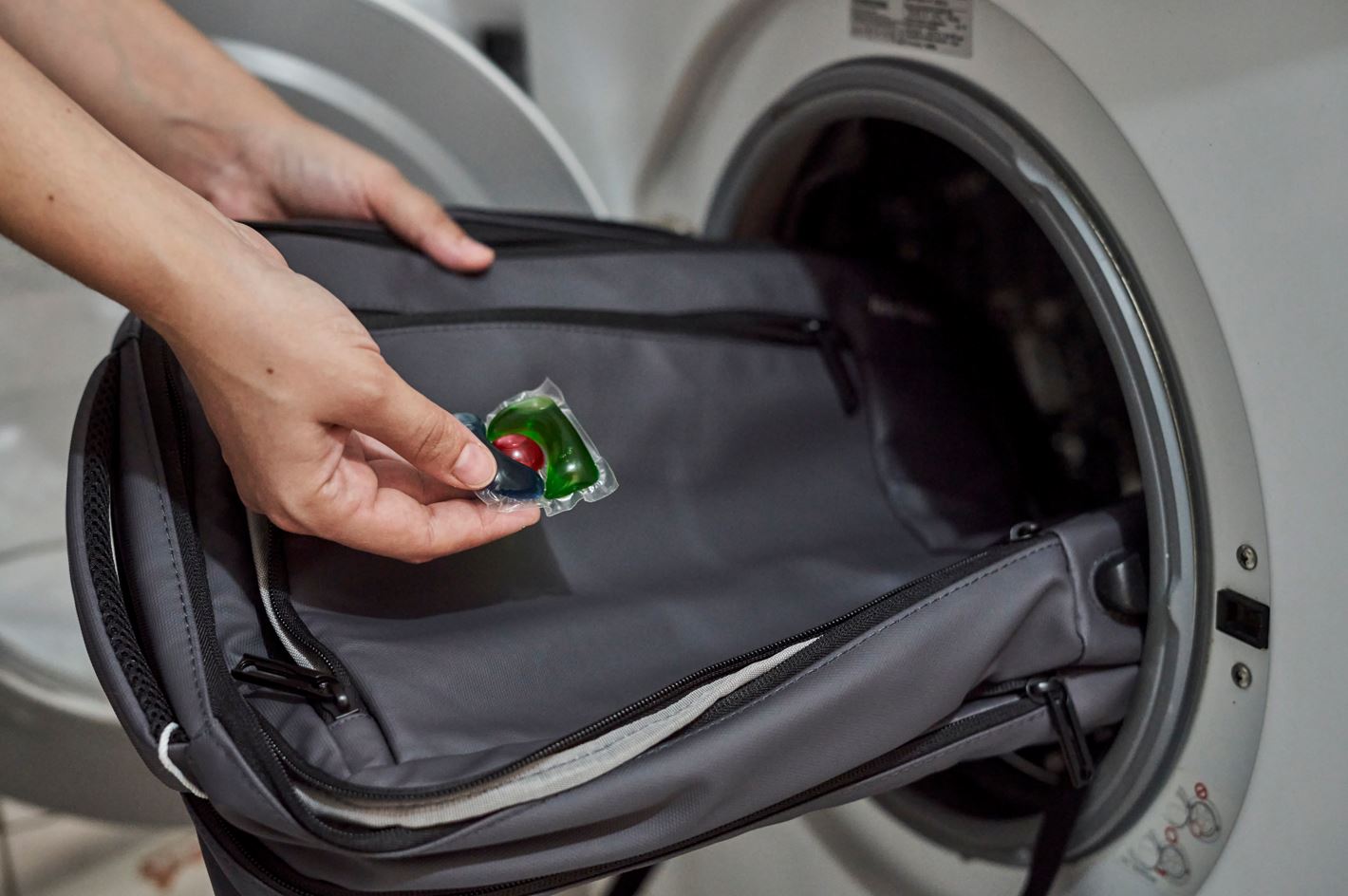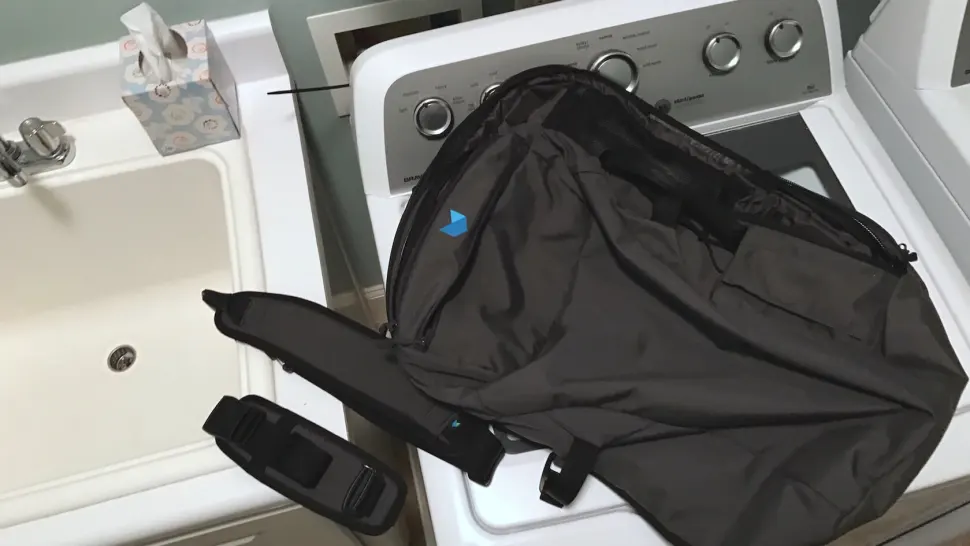Introduction:
Backpacks are essential items in our daily lives, used for school, work, travel, and outdoor activities. Over time, they accumulate dirt, grime, and odors, making regular cleaning essential. However, the method of cleaning can vary based on the material, construction, and care instructions of the backpack. This raises the question: Can you wash backpacks in the washing machine? The answer is yes, but with specific considerations and precautions to ensure the backpack’s longevity and cleanliness. Let’s explore the process in detail to understand how machine-washing your backpack can be done effectively.

Can You Wash Backpacks in the Washing Machine?
Understanding Backpack Material
Before throwing your backpack into the washing machine, it’s crucial to understand the type of material it’s made from. Different materials require unique care to avoid damage during washing.
Fabric Backpacks: Most fabric backpacks are made from synthetic materials like nylon, polyester, or canvas. These materials generally tolerate machine washing well, but it’s still essential to check the care label for specific instructions. Fabric backpacks benefit from machine washing as it effectively removes embedded dirt and stains.
Leather Backpacks: Leather backpacks should not be washed in the washing machine. The agitation and water can damage the leather, causing it to become stiff and discolored. Leather requires gentle hand cleaning with specialized leather cleaners to maintain its condition.
Backpacks with Delicate Embellishments: Backpacks adorned with embroidery, sequins, or other delicate embellishments may also be unsuitable for machine washing. The washing machine’s motion can cause these decorations to fray or fall off. Hand washing or spot cleaning is recommended for such backpacks.

Checking the Care Label
Before proceeding with washing, always refer to the care label inside the backpack. Manufacturers provide specific washing instructions, which are integral to maintaining the backpack’s quality.
Reading the Label: Check for symbols and written instructions that indicate whether machine washing is safe. Look for symbols that specify washing temperatures, dryer compatibility, and any other special care instructions.
Deciphering Symbols: The label may feature symbols such as a washing machine icon (indicating machine washability), a hand (indicating hand wash only), or a triangle with a slash (indicating no bleach). Understanding these symbols can guide your washing process.
Recognizing Manufacturer’s Warnings: If the label instructs against machine washing, respect those guidelines. Ignoring them can lead to irreversible damage. In such cases, alternative cleaning methods should be used.
Prepping the Backpack for Washing
Proper preparation ensures the washing process is effective and minimizes any potential damage to the backpack or the washing machine.
Emptying the Backpack: Completely empty all compartments, pockets, and pouches. Shake the backpack upside down to remove any hidden debris, such as crumbs, paper clips, or small items that could damage the machine or the backpack itself.
Brushing Off Loose Dirt: Use a soft brush to remove loose dirt and dust from the backpack’s surfaces. This step reduces the amount of dirt and grime entering the washing machine, making the cleaning process more efficient.
Removing Attachments: Detach any removable parts, like straps, keychains, or patches. These accessories can get tangled during washing and may tear or damage the backpack. Wash removable components separately if possible.
Securing Zippers and Straps: Close all zippers, clasps, and Velcro to prevent snags and tangles. Tuck in or tie straps to avoid them getting caught or stretched during the washing cycle.

Using a Pillowcase or Laundry Bag
For added protection, place the backpack in a pillowcase or a mesh laundry bag before putting it in the washing machine. This step helps shield the backpack from excessive agitation and reduces the risk of damage.
Choosing the Right Pillowcase or Bag: Select a pillowcase or laundry bag large enough to accommodate the backpack comfortably. Ensure that it can be securely closed, either with a zipper or a drawstring, to prevent the backpack from falling out during the wash cycle.
Benefits of Using Protective Bags: The fabric barrier provided by the pillowcase or laundry bag minimizes direct contact with the drum and other clothes, reducing wear and tear. This is particularly useful for preserving the backpack’s shape and integrity.
Selecting the Appropriate Washing Machine Settings
The washing machine’s settings play a crucial role in cleaning the backpack without causing damage. Selecting the right cycle, temperature, and detergent type is crucial for achieving optimal results.
Gentle Cycle: Choose the gentle or delicate cycle to minimize agitation. This setting provides a thorough clean while reducing the risk of damaging seams, zippers, and fabric.
Cold Water: Use cold water to prevent color fading and shrinking. While warm water can be effective for stain removal, it can also damage certain materials and embellishments on the backpack.
Mild Detergent: Opt for a mild, fragrance-free detergent. Harsh detergents can damage the fabric and leave residues that might irritate the skin. Use the recommended amount of detergent for smaller loads to prevent over-sudsing.
Adding an Extra Rinse: Consider adding an extra rinse cycle to ensure all detergent residues are thoroughly rinsed out. Residual detergent can attract dirt more quickly and potentially cause skin irritation.

Drying the Backpack
Proper drying is as important as washing. Incorrect drying methods can lead to mold, odors, and damage to the backpack’s structure and materials.
Air Drying: Air drying is the safest method. Allow the backpack to dry naturally by hanging it in a well-ventilated area. Avoid direct sunlight, which can cause colors to fade and weaken the fabric.
Using a Towel: To speed up the drying process, place a clean towel inside the backpack to absorb excess moisture. Replace the towel as it becomes damp to continue drawing out moisture.
Avoiding the Dryer: Never put the backpack in a tumble dryer. The heat can warp plastic components, melt synthetic fabrics, and shrink or distort the backpack’s shape. Maintaining room temperature or slightly warm air ensures the materials remain intact.
Stuffing for Shape: To maintain the backpack’s shape as it dries, stuff it with dry towels or paper. This step helps preserve the structure and prevents the fabric from becoming misshapen.
Spot Cleaning Stubborn Stains
In some cases, stubborn stains may remain even after machine washing. Spot cleaning can address these persistent areas without subjecting the entire backpack to another wash cycle.
Identifying Stubborn Stains: Inspect the backpack for any remaining stains. Check common areas like the bottom, straps, and pockets where stains and dirt tend to accumulate.
Creating a Cleaning Solution: Mix a small amount of mild detergent with water to create a cleaning solution. Alternatively, use a specialized stain remover suitable for the backpack’s material.
Applying and Scrubbing: Dip a soft cloth or sponge into the cleaning solution and gently scrub the stained areas. Avoid using harsh brushes or excessive force, which can damage the fabric.
Rinsing and Drying: After treating the stains, rinse the area with a damp cloth to remove any soap residue. Allow the backpack to air dry completely before using it again.

Regular Maintenance Tips
Preventing dirt buildup and keeping the backpack clean between washes can prolong its lifespan and reduce the frequency of machine washing.
Routine Cleaning: Wipe down the backpack with a damp cloth regularly to remove surface dirt and spills. This simple step can prevent stains from setting in and accumulating over time.
Using Fabric Sprays: Consider using fabric sprays or odor eliminators to keep the backpack smelling fresh between washes. These sprays can reduce odors caused by sweating, food, or daily use.
Storing Properly: Store the backpack in a cool, dry place when not in use. Avoid damp or humid areas, as they can promote mold growth and odors.
Conclusion
In conclusion, you can wash many backpacks in the washing machine, provided you take the necessary precautions and follow proper guidelines. By understanding the material, checking care labels, prepping the backpack, and selecting the right washing machine settings, you can achieve a thorough clean without causing any damage. Remember to dry the backpack correctly and perform spot cleaning for any stubborn stains. Regular maintenance will keep your backpack in good condition, prolonging its lifespan and ensuring it remains a reliable companion for all your activities. With these detailed steps and considerations, you can confidently wash your backpack in the washing machine and keep it looking and smelling fresh.

